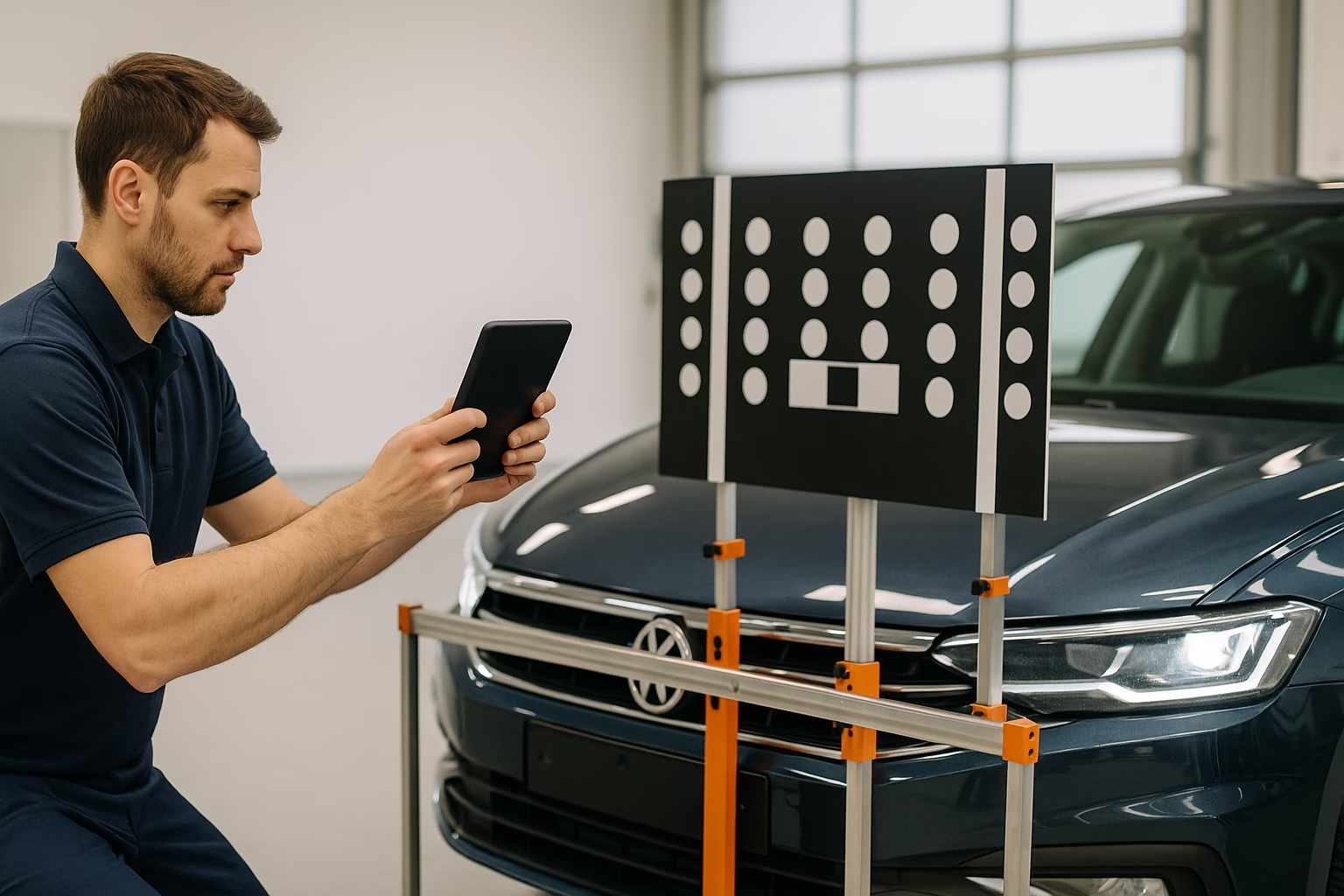Advanced driver assistance systems (ADAS) are built to make driving safer and less stressful. They monitor the road with cameras, radar and ultrasonic sensors and can warn you when you’re drifting out of your lane, apply the brakes if you get too close to another car or even adjust the steering to keep you centred. These features might seem to “just work” – until they don’t. Calibration is what keeps them accurate. It ensures every sensor is pointing in the right direction and interpreting distances correctly. Without it, those smart functions can misjudge hazards or fail to intervene when you need them most.
Why does this matter for everyday drivers? Because modern vehicles are subject to lots of small changes that can affect the position of sensors. The MRT Auto Clinic notes that calibration isn’t only needed after an accident – routine checks are crucial for optimal performance . Cameras and radar modules are mounted behind bumper covers, windscreens and mirrors. They must sit within tight tolerances to see the world properly. A slight misalignment can cause a camera to misread lane markings or a radar unit to think a parked car is in your path. That’s why calibration is part of the manufacturer’s specification when you buy a new car, and why it needs to be repeated whenever something disturbs the equipment.
So when should you have your ADAS calibrated? It’s not just after a serious crash. Calibration is recommended after a windscreen replacement, because many vehicles have cameras or lidar modules bonded to the glass. Changing tyres or wheels can alter ride height and wheel alignment, affecting how sensors read the road. Suspension repairs or lift kits change the angles of your vehicle, which can misdirect a radar beam. Even a software update or recall can require recalibration to ensure that new algorithms work with your hardware . The same applies if you’ve installed roof racks, bull bars or other accessories; our recent article on aftermarket accessories explains how obstructions can block sensors. In fact, a study cited by the National Highway Traffic Safety Administration found that roughly one in five vehicles equipped with ADAS will need calibration during its life for reasons beyond collisions .
Misconceptions about calibration can be dangerous. Some drivers assume that if no warning light is on, everything is fine. But sensors can drift gradually, and false confidence can lead to complacency. Others think any workshop can handle calibration. In reality, there are different types of calibration and not all service centres have the correct equipment. MRT Auto Clinic points out that calibration services vary: static calibration is done in a controlled environment with targets positioned at specific distances, while dynamic calibration involves driving the vehicle on a road to fine-tune the system . Each method addresses different aspects of sensor alignment, and some vehicles require both. Quality matters, too – improper calibration can reduce collision avoidance effectiveness by up to 50% .
For everyday drivers, a properly calibrated system means peace of mind. Lane keeping assist will nudge the steering gently instead of jolting you towards oncoming traffic. Adaptive cruise control will maintain a safe following distance without abrupt braking. Blind spot monitoring will warn you of vehicles actually in your blind spot rather than ghosts. Accurate sensors also reduce false alarms, which can be distracting and lead some drivers to ignore warnings altogether. In other words, calibration helps your car help you.
How is calibration performed? A trained technician uses specialised tools to position targets in front of the vehicle, measure distances and angles and adjust cameras and radar modules until they meet the manufacturer’s specifications. Static calibration may take place in a workshop bay, while dynamic calibration requires a road test at specific speeds and conditions. DIY attempts are a bad idea; as the MRT article emphasises, ADAS calibration involves precise adjustments that standard tools cannot achieve . It’s also important to choose a service provider with experience and certification for your make of car. Professional calibration is an investment in safety, similar to regular brake inspections or tyre rotations.
It’s also wise to pay attention to how your car behaves. If you notice your lane keeping assist pulling to one side, adaptive cruise behaving erratically or an ADAS warning light illuminated, book a check. Don’t wait for a major accident to reveal a problem. Many of the scenarios we covered in our article on minor accidents and windscreen chips – such as a pothole strike or a small chip repair – are reasons to schedule calibration. By staying proactive, you ensure that your ADAS features remain an asset rather than a liability.
Calibration matters because driver assistance is exactly that: assistance. As NHTSA explains, these technologies either warn you of an impending crash or take action to avoid one; they do not replace an attentive driver . Keeping your sensors aligned and your software updated allows these systems to perform as intended, complementing your judgement rather than undermining it. For everyday drivers, making calibration part of your routine maintenance is a simple step towards safer journeys.

Hiran Alwis is an automotive lecturer and ADAS specialist with over 15 years of experience in diagnostics, advanced safety systems, and technical training. He founded ADAS Project to help everyday drivers and workshop technicians understand and safely use advanced driver assistance systems.
